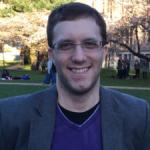
Alternative medicine is like an "alternative fact." If it was real, then the word "alternative" wouldn't be necessary.
Yet, occasionally, alternative medicine gets something right. Though uncommon, investigations sometimes demonstrate that an herbal remedy used in traditional Chinese medicine (TCM) has a legitimate biological or chemical basis. A fungus harvested from termite nests, for instance, has been traditionally used to treat depression and insomnia. Now, Taiwanese scientists think they have discovered a plausible scientific rationale for this practice.
The team cultured the fungus Xylaria nigripes (also called Wu Ling Shen) in the laboratory and then performed a chemical extraction to obtain biologically active compounds. (This picture depicts how chemists perform an extraction.) They isolated 11 compounds, seven of which were unknown to science.
Next, the researchers tested these molecules for their ability to suppress inflammation in cultured mouse brain cells. One of the known compounds (fomannoxin alcohol) and one of the unknown compounds (which they named Nigriterpene C) reduced the expression of two enzymes linked to inflammation in the brain, iNOS and COX-2. Because inflammation might be linked to depression and insomnia, it is plausible that this fungus could help treat those conditions.
Importantly, the team's conclusions are consistent with previously published results. In 2015, a paper in the journal Seizure showed that, compared to placebo, Xylaria extracts reduced symptoms of depression in patients with epilepsy.
There is still work to be done. Establishing biological plausibility is a good first step. Next, the authors should synthesize the compound and perform animal experiments before moving on to human clinical trials.
Source: Jung-Chun Chang, George Hsiao, Ruo-Kai Lin, Yueh-Hsiung Kuo, Yu-Min Ju, and Tzong-Huei Lee. "Bioactive Constituents from the Termite Nest-Derived Medicinal Fungus Xylaria nigripes." J. Nat. Prod. 80 (1): 38-44. Published: 5-January-2017. DOI: 10.1021/acs.jnatprod.6b00249



